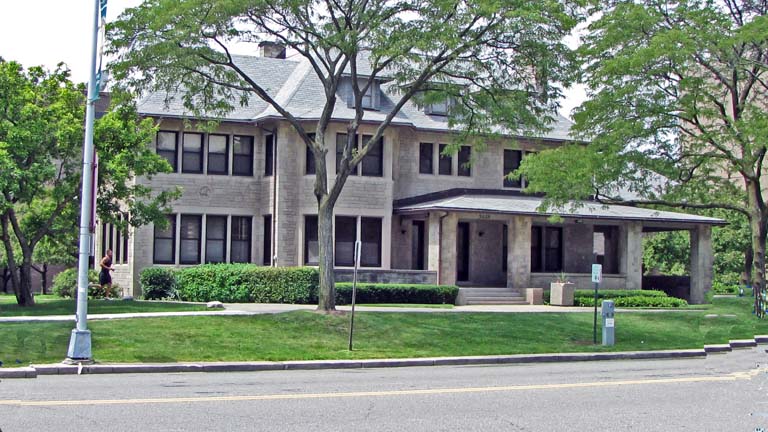

The area that is now the Cultural Center Historic District of Detroit was once a prestigious neighborhood where prosperous families built distinguished homes. Some are still visible including the Samuel Smith, George Beecher and Colonel Hecker residences on Woodward as well as distinguished homes in the East Ferry Street Historic District, including that of the city’s most accomplish art collector, Charles Lang Freer. The nearby blocks on Cass Avenue were also lined with attractive homes of wealthy Detroit residents.
For reasons I do not fully understand, there was a bicycle craze in the United States in the 1890s. I have seen estimates that two million bicycles were sold nationwide in 1897. That is at a time where there were only about 57 million households in the United States, very many of them living on unpaved roads in rural areas where bicycling was hardly possible.
There were, at that time, few if any firms that made and distributed their bicycles nationally. Each locality had its own bicycle manufactures. William C. Rands capitalized upon the bicycle craze in Detroit to become prosperous. But bicycle builders in the Detroit area, including the Dodge Brothers, had a great opportunity when auto sales started to boom after about 1905. Some of the parts used in bicycles and some of the skills required to manufacturer them could easily be transferred to the production of motor vehicles. Rands became a parts supplier for the emerging auto industry in Detroit amassing the wealth needed to build a home in one of the city’s most expensive neighborhoods.
In 1913 or so, he commission one of the city’s leading architects—George Mason—to design the attractive residence that you see pictured on this page. I do not know how long he and his family resided here. In 1944, the Detroit Board of Education purchased the block where the Rands home stood. At that time, I believe that Board administered what became Wayne State University. Many of the classes were taught at the Old Main building, but it was clear that Wayne would need more space and more buildings, hence the purchases during World War II.
Most colleges and universities faced severe problems during World War II since almost call college-age men were conscripted. But they soon faced a different problem: overcrowding. After the war ended in 1945, Congress enacted the G. I. Bill that not only paid the college tuition of veterans, but provided cash supplement to support them and their families. This was done, on one hand, to reward men for their military service, but there was another purpose. Most economists thought that the Depression with its extremely high unemployment rates would resume shortly after the end of World War II. The G. I. Bill effectively kept hundreds of thousands of young men out of the labor force.
Needing space for the huge increase in enrollment at Wayne, the William Rand house was converted into college classrooms and offices in 1946. It has been used by Wayne State University since then. In 1991, it was declared the School of Business Administration Annex.
The present central campus of Wayne was once the site of impressive homes built shortly after 1900. Now only four of them remain, all used by the University. In additions to the William C. Rands home, there is the Max Jacob home at 451 West Kirby, the Frederick Linsell Residence at 5104 Gullen Avenue designed by John Clarence Stahl, and the English Tudor style Herman Strasburg home at 5415 Cass dating from 1915 and designed by Marcus R. Burrowes.
Date of Construction: 1914
Architect: George D. Mason
Use in 2012: School of Business Administration Annex of Wayne State University
City of Detroit Designated Historic District: Not listed
State of Michigan Registry of Historic Sites: Not listed
National Register of Historic Places: Not listed
Photograph: Ren Farley; July 25, 2012
Description prepared: August, 2012